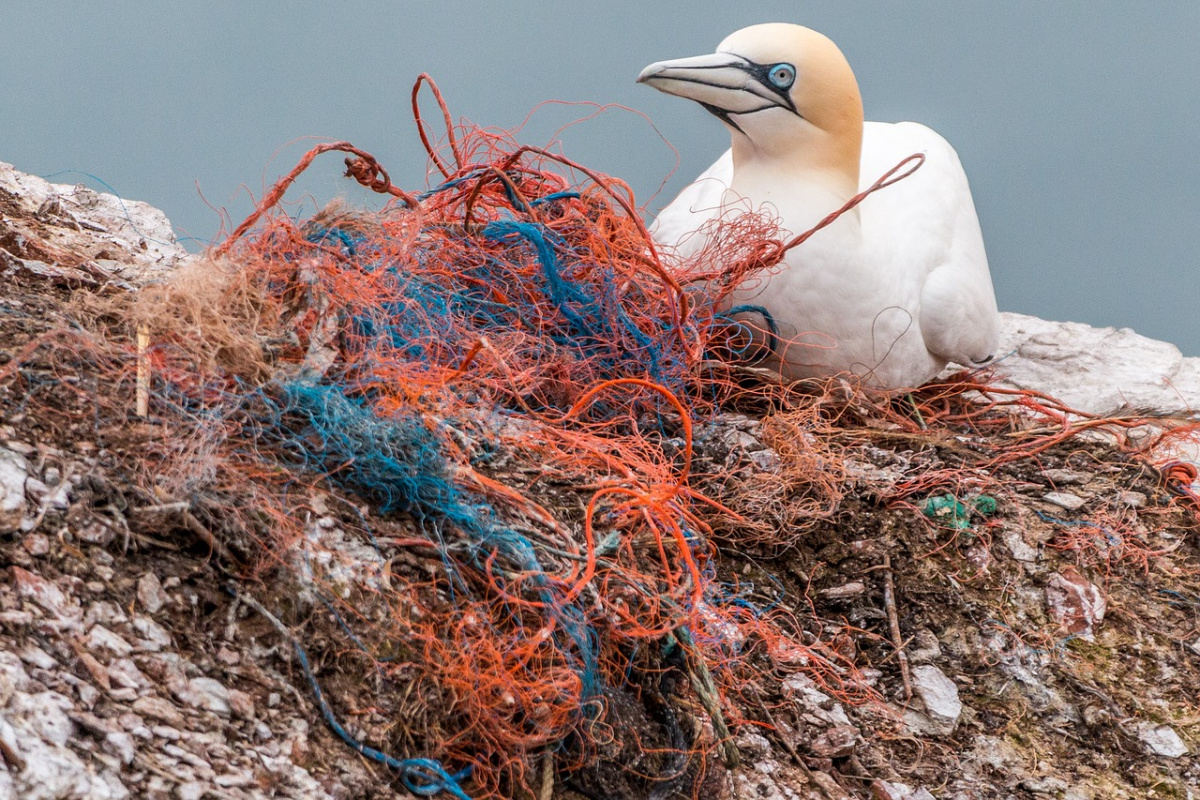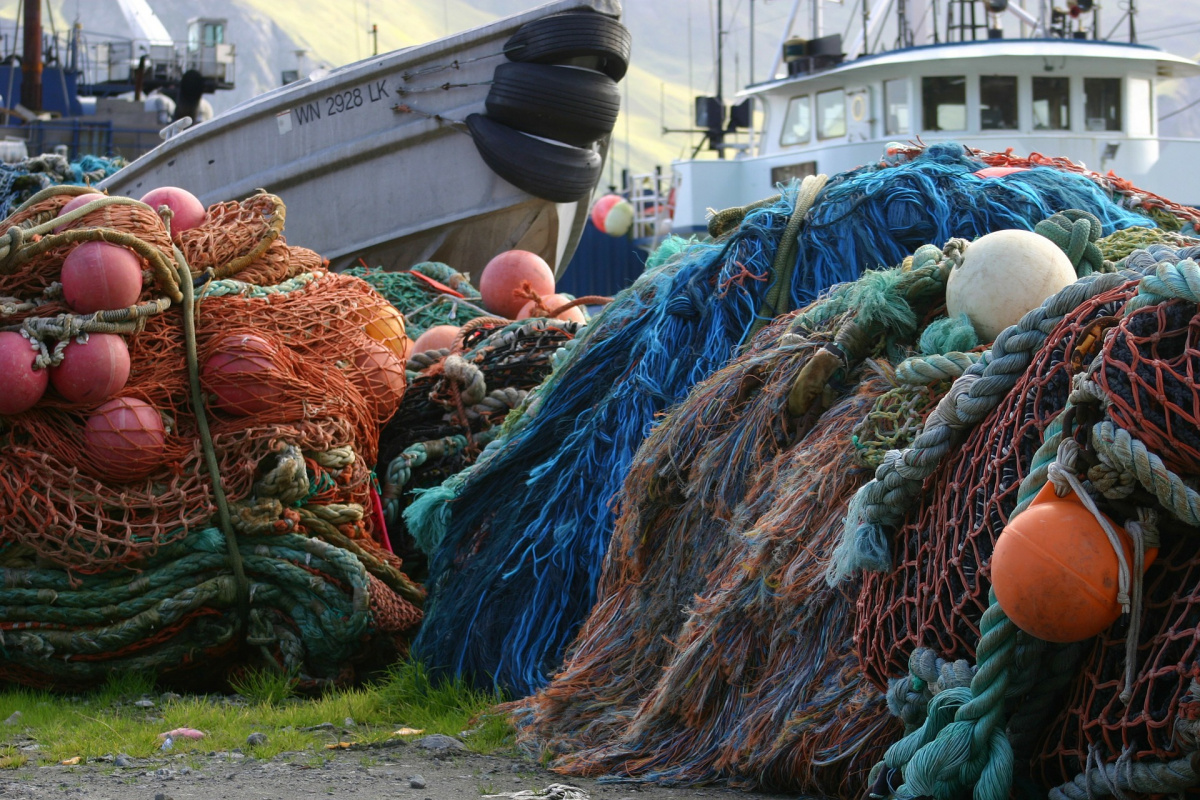Position paper: Advocating Extended Producer Responsibility for fishing gear
IUCN Global Marine and Polar Programme's Joao Sousa is a co-author on this paper which addresses the problem of abandoned, lost or otherwise discarded fishing gear (ALDFG). Being purposely designed to catch aquatic species, it is one of the most harmful forms of marine debris, and has also been found to be one of the main sources of marine plastic litter. The establishment of extended producer responsibility (EPR) policies and schemes for fishing gear and ropes represents a clear response to this major source of plastic pollution.
The problem
Recent years have seen a significant increase in concern about the global problem of used fishing gear and ropes in the world’s ocean and other aquatic environments (this paper also extends to gear used in aquaculture).
Recent studies have suggested that between 46%1 and 70%2 of the floating macroplastics in the ocean gyres is made up of fishing gear and maritime ropes.
Being purposely designed to catch aquatic species, abandoned, lost or otherwise discarded fishing gear (ALDFG), is one of the most harmful forms of marine debris, which creates serious issues for the overall health of aquatic environments including our ocean, rivers and lakes. Fishing gear and ropes can continue to fish and trap aquatic life, entangling aquatic megafauna, depleting harvestable fish populations thus impacting global food security, causing hazards to navigation, and acting as a hazard for commercial and non-commercial marine species, and aquatic habitats.
Overfishing from different sources, including ALDFG, is already considerably affecting the marine environment, with nearly 90% of the world’s marine fish stocks now fully exploited, overexploited or depleted3.
Furthermore, marine plastics can flow through different national jurisdictions and international waters, making the issue of fishing gear and ropes a cross-border global challenge. As a global issue contributing to the depletion of fish populations and fisheries sustainability and the increasing prevalence of marine plastic pollution, the challenge presented by fishing gear and ropes calls for equally global solutions.
Something can be done
It is recognized that no fisher ever wants to lose gear, as gear loss presents an economic cost, both immediate (via gear replacement costs) and future (via potentially impacted harvestable fish populations). However, it is expected for some gear to be lost during normal fishing operations due to inclement weather, snags beneath the surface, unintended interactions with other deployed gear and marine traffic: specific schemes and policies can be put in place to reduce usual gear lost.
Some examples of concrete actions to prevent fishing gear loss include: gear maintenance; reducing active gear interactions with wildlife; reducing financial and administrative burdens for port reception facilities; reducing trip lengths; and targeting education and gear stewardship programs to fishers4. Additionally, it is essential to provide fishers with an effective and viable disposal solution for gear that reaches the end of its useful life so it does not end up in the aquatic environment either due to a lack of viable disposal options or as a last resort.
The establishment of extended producer responsibility (EPR) policies and schemes for fishing gear and ropes represents a clear and actionable response to address one major vector of potential plastic pollution derived from fishing activities. The main goal of implementing EPR for this type of waste is to reduce marine plastic pollution by preventing and reducing the volumes of used fishing gear and ropes into the environment.
The paper's recommendations for setting up EPR policy and schemes for fishing gear & ropes
- Apply a staged approach
- Clearly define legal terms related to EPR for fishing gear and ropes
- Conduct coordinated design and implementation at national, local, and international level
- Consider Platform-based design and implementation of the EPR schemes
- Create and strengthen governance mechanisms
- Management and distribution of funds
- Address jurisdiction challenges
- Develop financial schemes and instruments that support effective implementation of EPR for fishing gear and ropes
- Design effective implementation plans for EPR
- Implement regular monitoring and evaluation
- Engage key stakeholders
The position paper
The paper is an output from PWFI sponsored by NORAD and was co-authored with UNEP DTIE, Searious Business, Global Ghost Gear and Ellen Mc arthur Foundation:
Advocating Extended Producer Responsibility for fishing gear
[1] Lebreton, L., Slat, B., Ferrari, F. et al. Evidence that the Great Pacific Garbage Patch is rapidly accumulating plastic. Sci Rep 8, 4666 (2018). https://doi.org/10.1038/s41598-018-22939-w.
[2] Eriksen M, Lebreton LCM, Carson HS, Thiel M, Moore CJ, et al. (2014) Plastic Pollution in the World’s Oceans: More than 5 Trillion Plastic Pieces Weighing over 250,000 Tons Afloat at Sea. PLoS ONE 9(12): e111913. doi:10.1371/ journal.pone.0111913.
[3] United Nations Conference on Trade and Development., 90% of fish stocks are used up – fisheries subsidies must stop. Available at: https://unctad.org/news/90-fish-stocks-are-used-fisheries-subsidies-must-stop
[4] Richardson K, Hardesty BD, Vince JZ and Wilcox C (2021) Global Causes, Drivers, and Prevention Measures for Lost Fishing Gear. Front. Mar. Sci. 8:690447. doi: 10.3389/fmars.2021.690447





